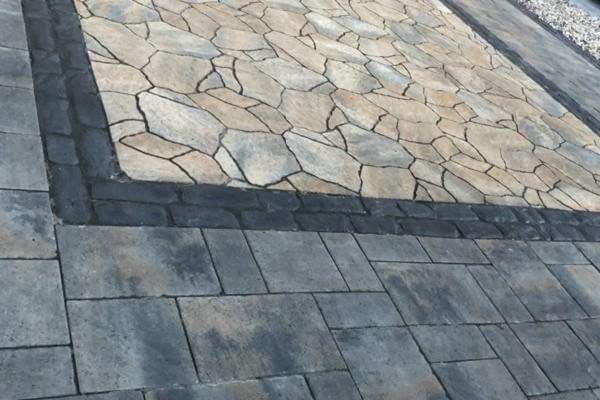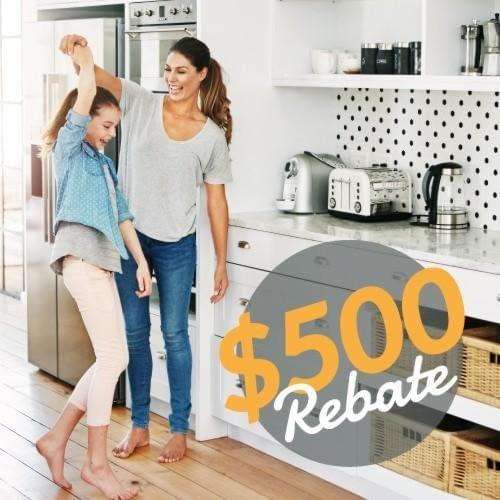Paver Stones | Retaining Walls

CONCRETE AND CONCRETE PUMPING AS LIQUID, INTERLOCKING STONES, FLAGSTONES AND ASPHALT, CUSTOM BRICK, STONE, OR TILE WALL, STAMPED CONCRETE AND BRICK OR STONE SIDING FACTS
Masonry is a tricky task to take on alone, let Ottawa Renovation & Construction help you make sure your walkway or patio is perfect the first time. Ensuring the quality and speed of the job is always our top priority when it comes to masonry work. From complicated projects like interlocking stone bricks or seemingly simple tasks like pouring concrete Ottawa Renovation & Construction will always make your home masonry project easy and painless. We use the best materials that will last a lifetime so you can simply enjoy your completed project without having to worry about longevity.
Concrete and Concrete Pumping as Liquid
The term “set in concrete” implies permanence, so installing concrete has to be done right the first time. Most homeowners choose concrete installation for sidewalks, driveways, patios, and foundations because it’s inexpensive, quick, and the final results require little maintenance. Plus, if you don’t like its dull-grey color, it can also be stamped and decorated to make it more attractive. People hire us as their licensed concrete contractor for all kinds of concrete project since we posse all needed and appropriate equipment with our specific knowledge: we know which kind of material is needed, how much is required, how it should be prepared, and we are responsible for delivery, application, and final finishes.
WARNING TO DO-IT-YOURSELFERS
You could choose to do this project yourself, but installing concrete is a tricky chore. You have to do all your own prep work and calculations, which is half the struggle. Plus, you’ll still want our pre-made cement supplier to arrive directly to your home via a delivery company in order to make the job go quicker. And quicker is essential. Once poured, concrete has a time limit before it dries, so we make sure your project is completely prepared when the cement trucks arrives. Our concrete delivery company may schedule several pours in a row and will charge extra if the driver has to wait on a site because it is not ready.
Interlocking Stones, Flagstones and Asphalt
OPEN YOUR EYES TO THE POSSIBILITIES OF BRICK AND STONE
Regardless of the nature of your home improvement project, it’s pretty likely that brick and stone, in one form or another, should be a part of it. From decorative veneers to structural walls, brick and stone offers our homeowner customer an almost limitless number of choices when it comes to making improvements to their residence. Talk to our stone mason, bricklayer, or general contractor about what it’s going to take to get any brick and stone projects you have in mind up and running.
MATERIALS THAT LAST A LIFETIME
By far the biggest draw to brick and stone as home improvement materials is their longevity. Stone takes the cake, of course, since it’s already been around for a few million years and figures to be around for a few million more. But brick is no slouch, either. The current boom in the antique and recycled brick industry is a testament to the longevity of brick as a building material. Either way you know you’re getting a building material that is going to last you a lifetime.
USES FOR BRICK
Brick has been around as long as people have been building houses, and it’s a wonderful material for use all around your property. Here’s some popular uses of brick to get you thinking about the possibilities available to you.
Brick pavers make for wonderful patios, driveways, and walkways. You can purchase new, interlocking pavers, or you might choose to use recycled, antique brick street pavers instead. As municipalities tear up old brick streets and roads for maintenance reasons, an entire industry has built up around recycling them and selling them to homeowners who enjoy their classic look and down-home feel.Brick siding is one of the best siding materials you’ll ever find. It’s nearly indestructible in the face of hail, high winds, and other damaging weather events. Furthermore, it naturally insulates your home and it looks great. Add to that the fact that it’s basically maintenance free, and you can see why brick siding has remained one of the most popular choices for homeowners for years on end.
Recycled brick is fast becoming a popular choice for building patios, brick walls, walkways, and arches. Because bricks made at the turn of the 19th century, and before, were often made by hand, they have a texture and variation in color that new brick simply can’t match.
and as For Stone . . .
Where brick gives you a more refined look, stone brings with it a rustic, natural feel. Here’s some popular uses of stone that you can use as a springboard for designing your own stone projects.Stone landscaping is one of the more popular uses of stone by today’s homeowners. Boulders, river rock, rock gardens, rock walls, and stone lined ponds and waterfalls, are all beautiful examples of stone being used to enhance your overall landscape design.
Stone patios, walkways, and pool decks are guaranteed to turn heads every time. Whether you’re looking for a flagstone patio, slate pool deck, or just want some stepping stone paths through the garden, the natural tones and timeless durability of stone make it perfect for a number of outdoor uses.Stone veneer siding is making a splash as a decorative home siding material. It’s actually made out of pre-cast concrete, but once you get it up nobody will be able to tell the difference. It will look like you hired out stone masons for years of backbreaking labor to get the final product.
TALK TO OUR PROS
Working with brick and stone is hard, grueling work. It takes a strong back, a good set of muscles, and a surprising amount of skill to get it laid down right. For all these reasons, it’s probably a good idea to talk to a professional who specializes in stone or brick if you’re interested in adding the timelessness and beauty of brick and stone to your home.
ASPHALT OR STONE?
The driveway is a critical part of any home. It’s one of the first things guests will see, and it’s the most natural entrance onto your property. There are several options you have when it comes to driveway materials, and each has different qualities. Stone driveways may not be nearly as popular as asphalt or concrete, but they have their place and advantages as well. If you’re thinking about building a new driveway consider the durability, advantages and pristine look of stone.
Custom Brick, Stone, or Tile Wall
When it comes to masonry choices, the three most popular are slump stone, new brick and manufactured alternatives.
BRICKS
Brick is made of fired clay and comes in hundreds of different colors. Considered by many to be the ultimate exterior wall finish, brick contain many advantages.
Readily available most everywhere with thousands of varieties to choose, brick is one of the most durable building materials. In fact, brick masonry should last 100 years, with the first 25 years completely maintenance-free.
Brick also won’t catch fire, rot or be eaten by termites and such.It can be one of the higher-priced exterior finishes; however, many homeowners prefer brick because, due to its durability, it’s less expensive in the long run.
STONE
Stone is another attractive, durable and expensive choice. An antique form of masonry, stone will last a lifetime. Just check out all the Greek and Roman monuments still standing today!Unfortunately, stone isn’t as available as brick, and not every stone works for masonry work. Some types of stone are too soft, and others are too porous. Stone exteriors also work best when installed with old-fashioned techniques.
Water is stone masonry’s worst enemy because freeze-thaw cycles can cause cracks. Properly sealed stone masonry prevents problems.
Every year, check your building’s masonry exterior four hours after a heavy rainstorm. Any dark patches on the wall means that water soaked into the surface. This is a future problem that will need fixing in the near future.
Manufactured Brick and Stone
There is a third alternative to brick and stone which contains all of the above advantages at a lower cost.
A mixture of Portland cement, natural aggregates and iron oxide pigments is poured into molds made from real stones. The result, available in a broad palette of colors and styles, looks incredibly realistic.
Many times what appears to be stone or brick on a house is actually a lightweight concrete-manufactured stone veneer or cultured stone.Architectural blocks are another attractive, virtually indestructible option. These are essentially the same as conventional concrete blocks, except they resemble polished granite, look like hand-hewn stone or tile or have other decorative finishes.
Concrete block masonry is more common with industrial buildings. It should last 50 to 80 years, and you’ll need to fix the joints after 25 years.
Unlike brick, concrete blocks are not waterproof. You’ll need to apply a water seal every 10 years.
The best water seals are silane and siloxane. You can apply them by spray, and they soak into the surface of the wall like stain.
COMMON MASONRY PROBLEMS
- Bulges in concrete come from excessive pressure on the back side of a wall.
- Concrete cracks happen because of horizontal or vertical stress to a masonry surface. (This is why rebar is used to strengthen concrete.)
- Discoloration is caused by water penetration or is an indication that water is entering but evaporating.
- Deteriorating mortar joints are generally due to age or water penetration.
- Leaning walls are usually due to a lack of sufficient footing (additional concrete added to the bottom of a wall to strengthen it) or to more horizontal pressure at the top of the wall than at the bottom.
- Brick, stone or blocks come apart from age and deterioration of mortar between masonry units.
- Sinking or settling in masonry is due to improper compaction of soil beneath the masonry or improper drainage around masonry.
- Leaching water is moisture that slowly finds its way through the masonry wall via cracks, holes and mortar joints, usually because of improper or deteriorating waterproofing.
Stamped Concrete
Stamped concrete is increasingly the material of choice for many home design projects today. Stamped concrete patios are designed to look like flagstone, Spanish tile, or quarry stone. Other stamped concrete patterns are used as kitchen counters, beautiful ceramic tile facades on the wall, and a fireplace hearth. This technique is not new, and has been so well refined, that you’ve likely walked past it, or over it, and assumed it was real quarry stone or fired tile.
THE NEW AND REFINED USES OF AN OLD FAVORITE
Don’t think of the old bland gray concrete—that efficient, sturdy material people use when they want something that is strong, lasts long, is inexpensive and is easy to work with. Or, think about concrete in the hands of an artist. The most basic concrete is small bits of stone bonded together. When these bits are at their smallest, and various pigments and lacquers are applied, stamped concrete can become slate, ceramic tile, cobblestone, marble, and more. The options are endless. When using stamped concrete it is also possible to mix patterns and colors, introduce edges, designs, centerpieces, and band work. The design is only by limited your imagination.
PATTERN STAMPED CONCRETE, STENCILED CONCRETE, AND ACID STAINED CONCRETE
The most common type of stamped concrete is pattern-stamped. This basically involves “stamping” patterns into freshly placed concrete and applying color, as well as any weather-treatment, stain or lacquer needed. Stenciled concrete is similar in that a stamp is used, only rather than a full-sized “stamp,” a stenciled sheet is used. This process is less expensive but also less reliable. While color is often applied to the top of the concrete after it is set and stamped, another process, acid staining, is an interesting one to consider.
ACID STAINS
Acid stained concrete is a simple staining process that can be used even when you are not using stamped concrete. Acid stained concrete mixes chemicals into the concrete which causes a reaction with minerals that are already present to create various colors. Because the color is then mixed in according to the mineral deposits in the concrete, it creates a mottled look that is almost identical to natural marble. These colors are natural colors, earth tones like the browns, reds and greens you see in classic architecture. This coloration can create a beautiful, natural look to any driveway, walkway, entranceway, or even your kitchen or bathroom floor.
Stamped concrete offers terrific options in interior design. You’ll often find concrete countertops that look as beautiful as any ceramic tile or granite countertop around. But like any other trade that requires some artistry, it is important to find the right company for the job.
With our company service, and a bit of imagination, stamped concrete will offer you an unlimited number of colors, textures and designs to work from.
Brick or Stone Siding Facts
Choosing the right type of home siding and the facts. The variance of siding materials, the ways to compare them number quite a few. For the most part, the prominent siding materials (vinyl, metal, wood, stucco) are all sound. They carry advantages and disadvantages depending on what you need and where you live. To determine which material is the best for your home, consider performance, cost, maintenance, and versatility.
Efficiency: Stucco siding is the most efficient siding product. The others are not far behind, but this material became popular and wide-spread in the southwest because it kept the cool air in the house even as the sun beat down. If you’ve ever lived in a brick home you understand how easily bricks heat up then warm the home, which can be murder on a summer day in the south. Stucco is thick enough that it repels the heat from getting in and cool air from getting out, and just the opposite in the winter.
BRICK MASONRY
When it comes to masonry choices, the three most popular are slump stone, new brick and manufactured alternatives. Benefits of and common masonry problems include…shifting, chipping, cracking, sagging, sinking, fading.
When choosing the surface for a bathroom or kitchen remodel, many homeowners turn to the classic look and excellent durability of stone and tile.
Have a project in mind?
We do Residential, Commercial & Industrial Properties
Licensed as Ontario Corporation. Fully Insured & Bonded for your project.
Receive a $500 gift from us!
Whether it’s a small project or a bigger renovation, Ottawa Home Renovation’s team can help! With over 20 years of experience, we can help you make the most out of your home.
Already have a project in mind? Take advantage of our $500 rebate!
*Spend $2,000 or more on a home renovation, bathroom renovation, kitchen renovation or landscape project. Some conditions may apply.

